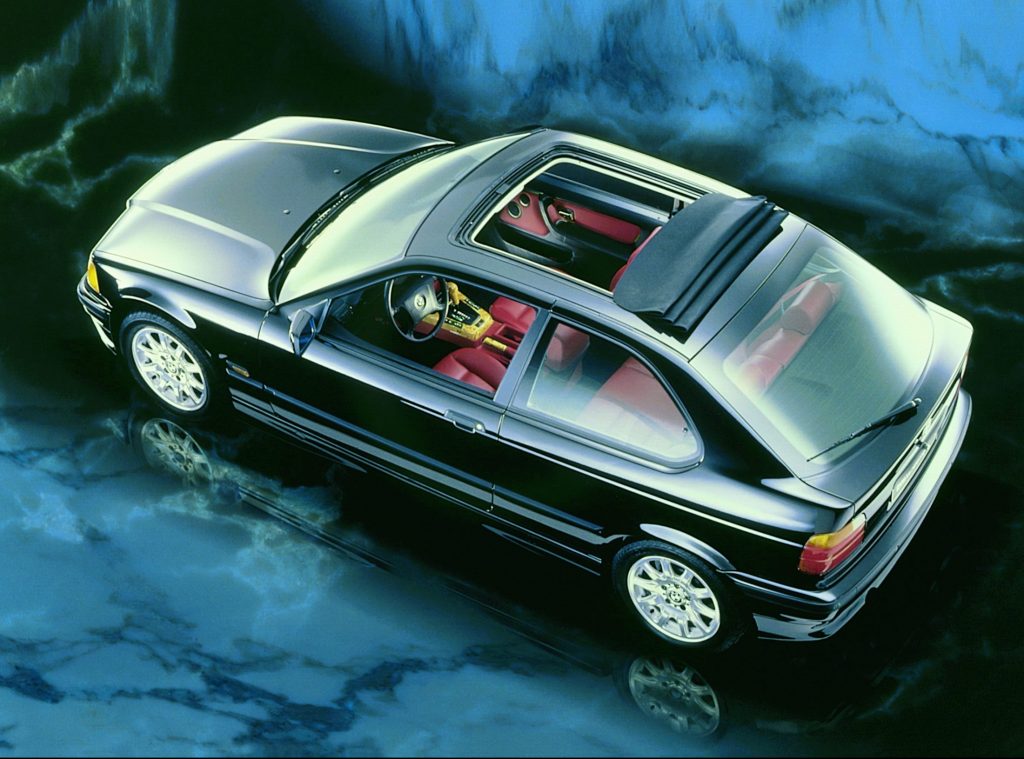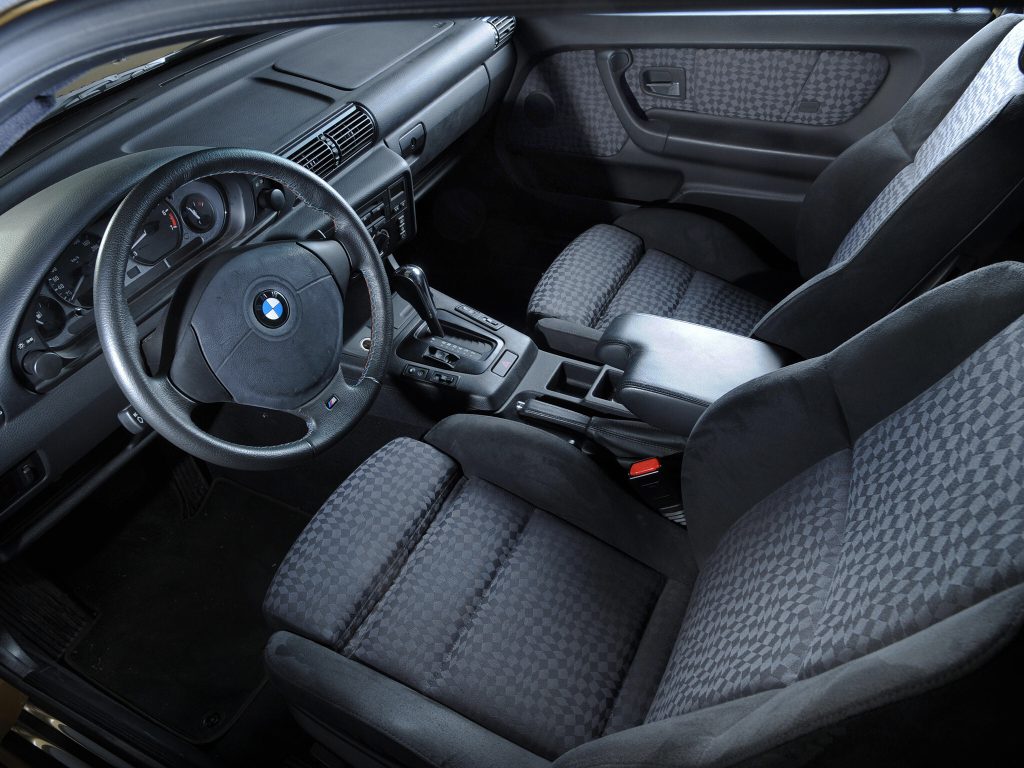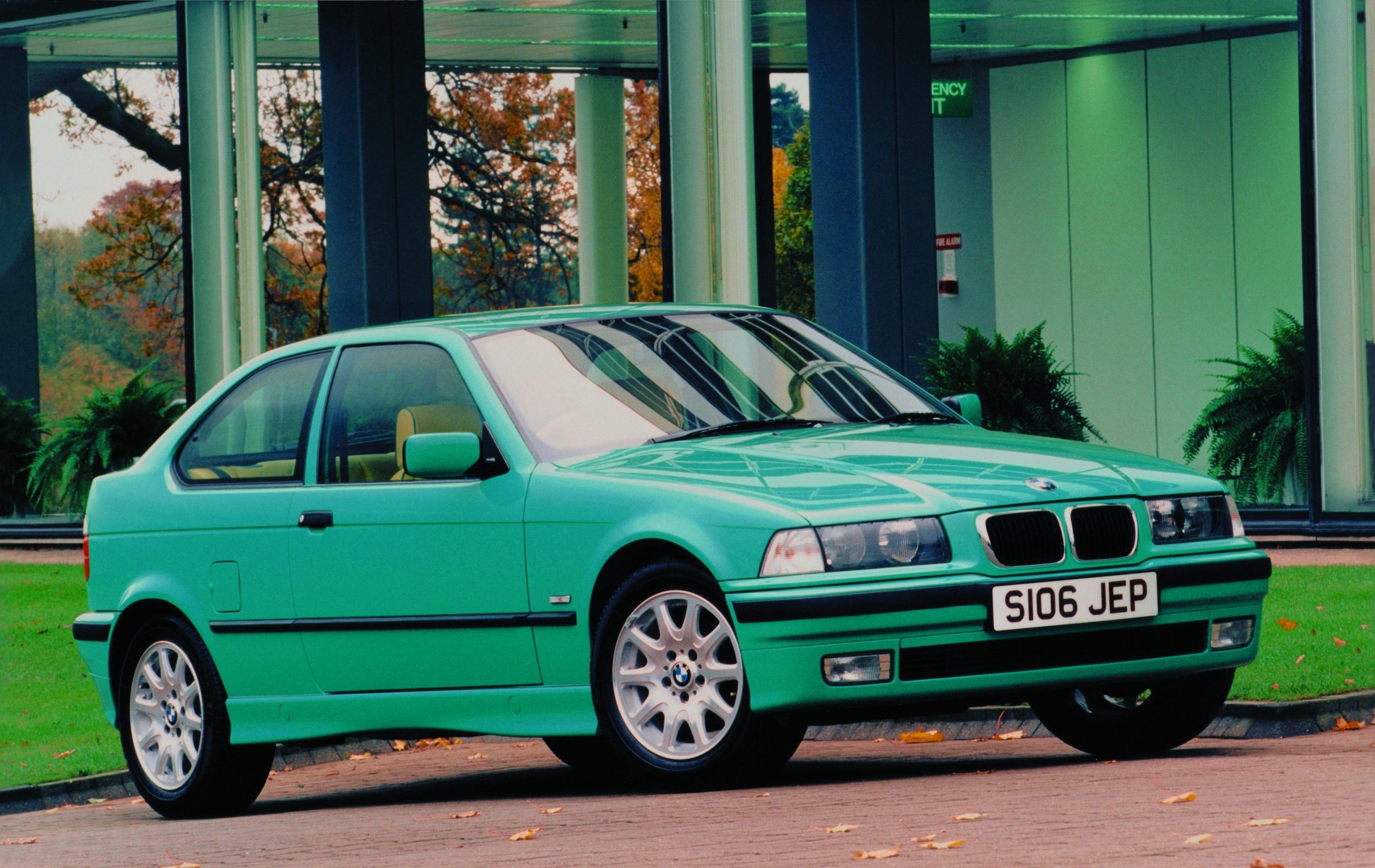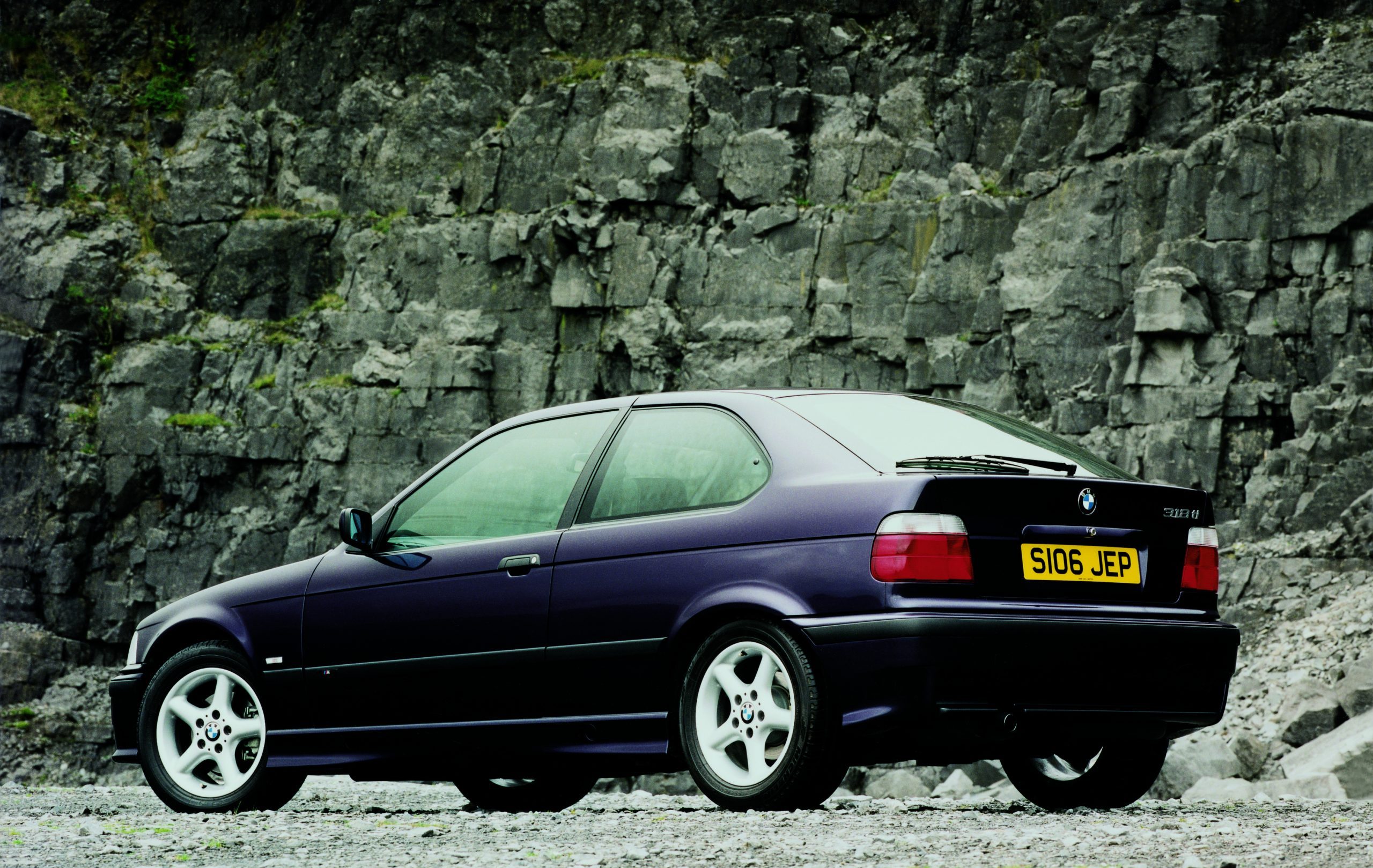There is one BMW 3-series E36 Compact that could never, ever be displayed under an ‘Unexceptional’ banner in a convincing way. The 323ti is, indeed, quite exceptional. It has BMW’s fabulous 2.5-litre straight-six within a thoroughly practical three-door hatchback. Its endowment is 170bhp, 143mph top speed, 0-60mph in 7.8sec, and the kind of compelling on-road manners, sound, character and driver involvement that were the makings of the greatest BMWs of the 1980s, M3s and M5s among them.
Don’t drool too uncontrollably. You’re highly unlikely to come across one of the roughly 15,000 examples built. They were left-hand drive and not even sold in the USA. In the fractious arena of early Compacts, it’s about as typical as a Viagra tablet in a box of Rennies.

The first Compact, based on the E36 3-series, is generally recalled as one of BMW’s rare duffers, an allegedly three-out-of-five-stars effort to broaden the marque’s appeal down into hatchback territory, with a regard only for skimping on investment. People give it an abnormally harsh tongue-lashing, but it’s all a mite unfair, even misinformed. A friend of mine has recently picked up an immaculate, green, unadorned specimen, and in my view – and after nearly three decades have passed since the BMW community’s collective ears started to billow steam, in 1994 – it has a purposeful old-school appearance that marks it out as a rather smart young-timer classic.

Spool back to the early 1990s and we find BMW, like most premium marques, grappling with the issues of growth. It was still some distance away from simply bolting on extra capacity by its ill-fated acquisition of Rover Group, and instead looked again at its 3-series starter range to see what could be achieved in-house. Could a rival to the Golf be, perhaps, cleverly wrought from the 316 without even touching the wheelbase?
Designing a hatchback three-door rear end was possible, even if its stumpy contours would sit uneasily with the elegance of the nose. Some 22cm of outer metal length was dispensed with. But with rear-wheel drive, the back seats would have to fold in pretty restricted circumstances. That would mean a near-impossible reworking of the multi-link rear suspension that was one of the star elements of the E36, giving it its exemplary handling. The less sophisticated, semi-trailing arm set-up used across the whole of the previous E30 range, however, fitted the bill perfectly, with the added benefit that it was far cheaper to manufacture. That was highly significant when it came to pricing, as the new Compact 3-series had to be price-competitive with the Golf to be worthwhile doing at all. All the rationales fitted together neatly.

Criticism ranged from bemoaning the compromised handling and ride, to full-on screaming fits that this was, in effect, the ends of two cars welded together. There is nothing so reactionary as a 1980s/90s BMW purist, as Chris Bangle and his ‘butt’ were to discover. In fact, the Compact was only inferior in its road manners when driven pretty hard or on really terrible road surfaces, and of course a base 3-series saloon was more expensive.
However, the data for rear passenger and luggage space didn’t stack up too well when assessing it against front-wheel drive rivals. The interior trim, plastics and door cards were also somewhat lower grade, harder and less tactile with a more austere dashboard
Yet paint and assembly quality were well up to Munich’s usual, painstaking standards, and all the important safety kit of the day such as anti-lock brakes, seatbelt pre-tensioners, driver’s airbag and side impact beams were included. Most importantly, as Autocar pointed out, that vital ‘sense of occasion and pride of ownership’ were immediately obvious.


In 1994 there were two engine options, a meek but thrifty and refined 1.6-litre 102bhp in the 316i and a 1.8-litre 140bhp in the 318ti. Even the smaller engine gave the Compact a 117mph top speed and zero to 60mph in just under 10sec, which was ample for eager marque newbies saying goodbye to ordinary car life with a Renault 19 or Vauxhall Astra. In the six years until the E46 Compact replaced the original one, there were myriad tweaks and skims to keep the cars appealing, in the absence of the 323ti, and excluding the diesel, the 318ti Compact Sport of 1999 with 1.9-litre 140bhp engine offering 133Ib ft of torque at 4300rpm was probably the ultimate all-round package of this often-maligned type, of which just over 371,000 examples were sold. [Ed’s note: Don’t forget the likes of Hartge. Birds Garage transformed the 318ti into the Hartge H3, which was a revvy 2.1-litre beast of a Compact that the company pitched as an alternative to the more ‘grown up’ M3.]
And yet, of course, as a car to search out and own today, you’ll be viewing mainly poverty-spec, mid-‘90s 316 Compacts with sober interiors, minimal gadgetry and very little testosterone smearing the steering wheel and accelerator pedal; those items, indeed, might not even be shiny through frenzied enjoyment after all these years, this being the key Beemer from that decade likely to have received loving Sunday morning care from their rapt owners.
That’s the lovely aura of my pal’s example; it feels like a retirement car owned by a tasteful oldie living in Barnes or Leamington Spa. So even if you find the Compact itself a bit of a travesty of the familiar BMW ethos, just pick one like this and enjoy its pleasant, lasting qualities for many more years.
Read more
Executive Decision: Audi 80 vs BMW 3-series vs Mercedes 190E
Opinion: Why aren’t we allowed to buy cheap small cars any more?
The Grand Tour: James May on his Scandi Flick crash










Time to forget, more like. That’s a dog.
Rear suspension.. it’s not when drive. Really fast.. specifically, it’s let-off oversteer and sensitivity to road surface irregularities, such as wet drain covers or bits of oil.. but it kinda grips better the harder you can drive it in the dry.
I thought they were rubbish until coming to own one.. really liked it, practical and the handling was surprisingly addictive.. pretty much ruined a lot of new cars for me. The 1.6 is steady but picks up quite well on the motorway (for a 1.6), as the dual path intake comes into play while a heavy flywheel matters less.
As a 25yo who owns 2 E36 compacts a 318ti California top and a 323ti. Odd looking but so fun to drive!
I had a e36 compact bmw 1800 the best bmw I have ever owned what a car